In 2012, physicists in the Netherlands announced a discovery in particle physics that started chatter about a Nobel Prize. Inside a tiny rod of semiconductor crystal chilled cooler than outer space, they had caught the first glimpse of a strange particle called the Majorana fermion, finally confirming a prediction made in 1937. It was an advance seemingly unrelated to the challenges of selling office productivity software or competing with Amazon in cloud computing, but Craig Mundie, then heading Microsoft’s technology and research strategy, was delighted. The abstruse discovery—partly underwritten by Microsoft—was crucial to a project at the company aimed at making it possible to build immensely powerful computers that crunch data using quantum physics. “It was a pivotal moment,” says Mundie. “This research was guiding us toward a way of realizing one of these systems.”
Microsoft is now almost a decade into that project and has just begun to talk publicly about it. If it succeeds, the world could change dramatically. Since the physicist Richard Feynman first suggested the idea of a quantum computer in 1982, theorists have proved that such a machine could solve problems that would take the fastest conventional computers hundreds of millions of years or longer. Quantum computers might, for example, give researchers better tools to design novel medicines or super-efficient solar cells. They could revolutionize artificial intelligence.
Progress toward that computational nirvana has been slow because no one has been able to make a reliable enough version of the basic building block of a quantum computer: a quantum bit, or qubit, which uses quantum effects to encode data. Academic and government researchers and corporate labs at IBM and Hewlett-Packard have all built them. Small numbers have been wired together, and the resulting devices are improving. But no one can control the physics well enough for these qubits to serve as the basis of a practical general-purpose computer.
Microsoft has yet to even build a qubit. But in the kind of paradox that can be expected in the realm of quantum physics, it may also be closer than anyone else to making quantum computers practical. The company is developing a new kind of qubit, known as a topological qubit, based largely on that 2012 discovery in the Netherlands. There’s good reason to believe this design will be immune from the flakiness plaguing existing qubits. It will be better suited to mass production, too. “What we’re doing is analogous to setting out to make the first transistor,” says Peter Lee, Microsoft’s head of research. His company is also working on how the circuits of a computer made with topological qubits might be designed and controlled. And Microsoft researchers working on algorithms for quantum computers have shown that a machine made up of only hundreds of qubits could run chemistry simulations beyond the capacity of any existing supercomputer.
In the next year or so, physics labs supported by Microsoft will begin testing crucial pieces of its qubit design, following a blueprint developed by an outdoorsy math genius. If those tests work out, a corporation widely thought to be stuck in computing’s past may unlock its future.
Stranger still: a physicist at the fabled but faded Bell Labs might get there first.
Tied Up in Knots
In a sunny room 100 yards from the Pacific Ocean, Michael Freedman, the instigator and technical mastermind of Microsoft’s project, admits to feeling inferior. “When you start thinking about quantum computing, you realize that you yourself are some kind of clunky chemical analog computer,” he says. Freedman, who is 63, is director of Station Q, the Microsoft research group that leads the effort to create a topological qubit, working from a dozen or so offices on the campus of the University of California, Santa Barbara. Fit and tanned, he has dust on his shoes from walking down a beach path to lunch.
If his mind is a clunky chemical computer, it is an extraordinary one. A mathematical prodigy who entered UC Berkeley at the age of 16 and grad school two years later, Freedman was 30 when he solved a version of one of the longest-standing problems in mathematics, the Poincaré conjecture. He worked it out without writing anything down, visualizing the distortion of four-dimensional shapes in his head. “I had seen my way through the argument,” Freedman recalls. When he translated that inner vision into a 95-page proof, it earned the Fields Medal, the highest honor in mathematics.
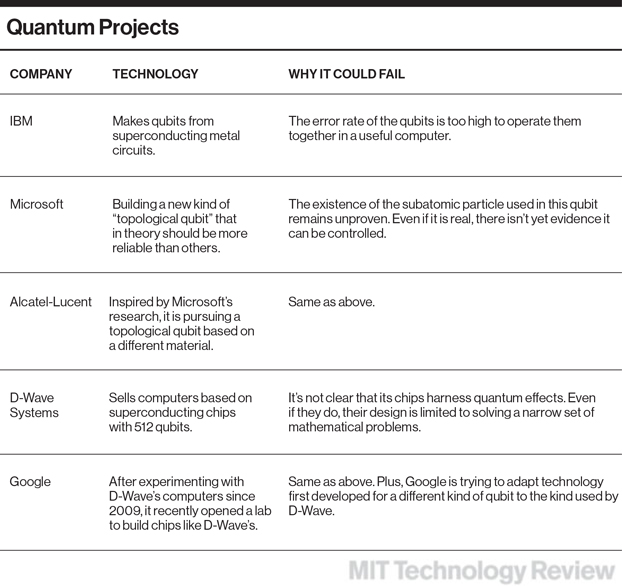
That cemented Freedman’s standing as a leading light in topology, the discipline concerned with properties of shapes that don’t change when those shapes are distorted. (An old joke has it that topologists can’t distinguish a coffee cup from a doughnut—both are surfaces punctured by a single hole.) But he was drawn into physics in 1988 after a colleague discovered a connection between some of the math describing the topology of knots and a theory explaining certain quantum phenomena. “It was a beautiful thing,” says Freedman. He immediately saw that this connection could allow a machine governed by that same quantum physics to solve problems too hard for conventional computers. Ignorant that the concept of quantum computing already existed, he had independently reinvented it.
Freedman kept working on that idea, and in 1997 he joined Microsoft’s research group on theoretical math. Soon after, he teamed up with a Russian theoretical physicist, Alexei Kitaev, who had proved that a “topological qubit” formed by the same physics could be much more reliable than qubits that other groups were building. Freedman eventually began to feel he was onto something that deserved attention beyond his rarefied world of deep math and physics. In 2004, he showed up at Craig Mundie’s office and announced that he saw a way to build a qubit dependable enough to scale up. “I ended up sort of making a pitch,” says Freedman. “It looked like if you wanted to start to build the technology, you could.”
Mundie bought it. Though Microsoft hadn’t been trying to develop quantum computers, he knew about their remarkable potential and the slow progress that had been made toward building them. “I was immediately fascinated by the idea that maybe there was a completely different approach,” he says. “Such a form of computing would probably turn out to be the basis of a transformation akin to what classical computing has done for the planet in the last 60 years.” He set up an effort to create the topological qubit, with a slightly nervous Freedman at the helm. “Never in my life had I even built a transistor radio,” Freedman says.
Distant Dream
In some ways, a quantum computer wouldn’t be so different from a conventional one. Both deal in bits of data represented in binary form. And both types of machine are made up of basic units that represent bits by flipping between different states like a switch. In a conventional computer, every tiny transistor on a chip can be flipped either off to signify a 0 or on for a 1. But because of the quirky rules of quantum physics, which govern the behavior of matter and energy at extremely tiny scales, qubits can perform tricks that make them exceedingly powerful. A qubit can enter a quantum state known as superposition, which effectively represents 0 and 1 at the same time. Once in a superposition state, qubits can become linked, or “entangled,” in a way that means any operation affecting one instantly changes the fate of another. Because of superposition and entanglement, a single operation in a quantum computer can execute parts of a calculation that would take many, many more operations for an equivalent number of ordinary bits. A quantum computer can essentially explore a huge number of possible computational pathways in parallel. For some types of problems, a quantum computer’s advantage over a conventional one grows exponentially with the amount of data to be crunched. “Their power is still an amazement to me,” says Raymond Laflamme, executive director of the Institute for Quantum Computing at the University of Waterloo, in Ontario. “They change the foundation of computer science and what we mean by what is computable.”
In the next year or so, physics labs supported by Microsoft will begin testing its qubit design.
But pure quantum states are very fragile and can be observed and controlled only in carefully contrived circumstances. For a superposition to be stable, the qubit must be shielded from seemingly trivial noise such as random bumping from subatomic particles or faint electrical fields from nearby electronics. The two best current qubit technologies represent bits in the magnetic properties of individual charged atoms trapped in magnetic fields or as the tiny current inside circuits of superconducting metal. They can preserve superpositions for no longer than fractions of a second before they collapse in a process known as decoherence. The largest number of qubits that have been operated together is just seven.
Since 2009, Google has been testing a machine marketed by the startup D-Wave Systems as the world’s first commercial quantum computer, and in 2013 it bought a version of the machine that has 512 qubits. But those qubits are hard-wired into a circuit for a particular algorithm, limiting the range of problems they can work on. If successful, this approach would create the quantum-computing equivalent of a pair of pliers—a useful tool suited to only some tasks. The conventional approach being pursued by Microsoft offers a fully programmable computer—the equivalent of a full toolbox. And besides, independent researchers have been unable to confirm that D-Wave’s machine truly functions as a quantum computer. Google recently started its own hardware lab to try to create a version of the technology that delivers.
The search for ways to fight decoherence and the errors it introduces into calculations has come to dominate the field of quantum computing. For a qubit to truly be scalable, it would probably need to accidentally decohere only around once in a million operations, says Chris Monroe, a professor at the University of Maryland and co-leader of a quantum computing project funded by the Department of Defense and the Intelligence Advanced Research Projects Activity. Today the best qubits typically decohere thousands of times that often.
Microsoft’s Station Q might have a better approach. The quantum states that lured Freedman into physics—which occur when electrons are trapped in a plane inside certain materials—should provide the stability that a qubit builder craves, because they are naturally deaf to much of the noise that destabilizes conventional qubits. Inside these materials, electrons take on strange properties at temperatures close to absolute zero, forming what are known as electron liquids. The collective quantum properties of the electron liquids can be used to signify a bit. The elegance of the design, along with grants of cash, equipment, and computing time, has lured some of the world’s leading physics researchers to collaborate with Microsoft. (The company won’t say what fraction of its $11 billion annual R&D spending goes to the project.)
The catch is that the physics remains unproven. To use the quantum properties of electron liquids as bits, researchers would have to manipulate certain particles inside them, known as non-Abelian anyons, so that they loop around one another. And while physicists expect that non–Abelian anyons exist, none have been conclusively detected.
Majorana particles, the kind of non-Abelian anyons that Station Q and its collaborators seek, are particularly elusive. First predicted by the reclusive Italian physicist Ettore Majorana in 1937, not long before he mysteriously disappeared, they have captivated physicists for decades because they have the unique property of being their own antiparticles, so if two ever meet, they annihilate each other in a flash of energy.
No one had reported credible evidence that they existed until 2012, when Leo Kouwenhoven at Delft University of Technology in the Netherlands, who had gotten funding and guidance from Microsoft, announced that he had found them inside nanowires made from the semiconductor indium antimonide. He had coaxed the right kind of electron liquid into existence by connecting the nanowire to a chunk of superconducting electrode at one end and an ordinary one at the other. It offered the strongest support yet for Microsoft’s design. “The finding has given us tremendous confidence that we’re really onto something,” says Microsoft’s Lee. Kouwenhoven’s group and other labs are now trying to refine the results of the experiment and show that the particles can be manipulated. To speed progress and set the stage for possible mass production, Microsoft has begun working with industrial companies to secure supplies of semiconductor nanowires and the superconducting electronics that would be needed to control a topological qubit.
For all that, Microsoft doesn’t yet have its qubit. A way must be found to move Majorana particles around one another in the operation needed to write the equivalent of 0s and 1s. Materials scientists at the Niels Bohr Institute in Copenhagen recently found a way to build nanowires with side branches, which could allow one particle to duck to the side while another passes. Charlie Marcus, a researcher there who has worked with Microsoft since its first design, is now preparing to build a working system with the new wires. “I would say that is going to keep us busy for the next year,” he says.
Success would validate Microsoft’s qubit design and put an end to recent suggestions that Kouwenhoven may not have detected the Majorana particle in 2012 after all. But John Preskill, a professor of theoretical physics at Caltech, says the topological qubit remains nothing more than a nice theory. “I’m very fond of the idea, but after some years of serious effort there’s still no firm evidence,” he says.
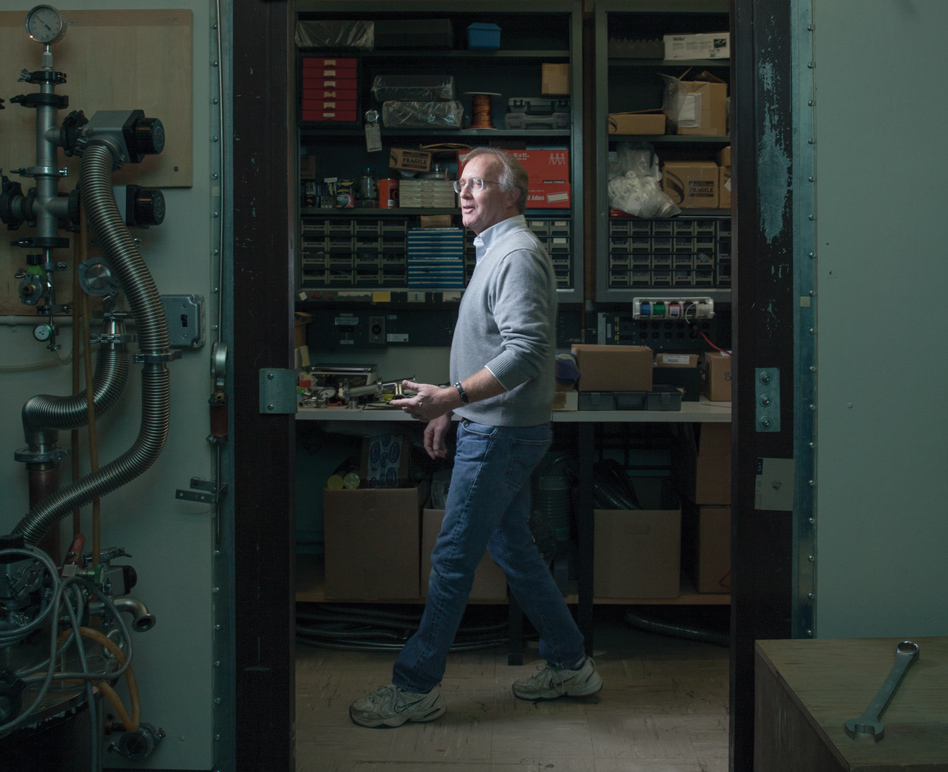
Bob Willett’s quantum computing research at Bell Labs is showing promise.
Competitive Physics
At Bell Labs in New Jersey, Bob Willett says he has seen the evidence. He peers over his glasses at a dull black crystal rectangle the size of a fingertip. It has hand-soldered wires around its edges and fine zigzags of aluminum on its surface. And in the middle of the chip, in an area less than a micrometer across, Willett reports detecting non-Abelian anyons. If he is right, Willett is farther along than anyone who is working with Microsoft. And in his series of small, careworn labs, he is now preparing to build what—if it works—will be the world’s first topological qubit. “We’re making the transition from the science to the technology now,” he says. His effort has historical echoes. Down the corridor from his labs, past a giant bust of Thomas Edison, is a glass display case with the first transistor inside, made on this site in 1947.
Willett’s device is a version of a design that Microsoft has mostly given up on. By the time the company’s project began, Freedman and his collaborators had determined that it should be possible to build a topological qubit using crystals of ultrapure gallium arsenide that trap electrons. But in four years of experiments, the physics labs supported by Microsoft didn’t find conclusive evidence of non-Abelian anyons. Willett had worked on similar physics for years, and after reading a paper of Freedman’s on the design, he decided to have a go himself. In a series of papers published between 2009 and 2013, he reported finding those crucial particles in his own crystal-based devices. When one crystal is cooled with liquid helium to less than 1 Kelvin (−272.15 °C) and subjected to a magnetic field, an electron liquid forms at its center. Willett uses electrodes to stream the particles around its edge; if they are non-Abelian anyons looping around their counterparts in the center, they should change the topological state of the electron liquid as a whole. He has published results from several different experiments in which he saw telltale wobbles, which theorists had predicted, in the current of those flowing particles. He’s now moved on to building a qubit design. It is not much more complex than his first experiment: just two of the same circuits placed back to back on the same crystal, with extra electrodes that link electron liquids and can encode and read out quantum states that represent the equivalent of 0s and 1s.
Willett hopes that device will squelch skepticism about his results, which no one else has been able to replicate. Microsoft’s collaborator Charlie Marcus says Willett “saw signals that we didn’t see.” Willett counters that Marcus and others have made their devices too large and used crystals with important differences in their properties. He says he recently confirmed that by testing some devices made to the specifications used by other researchers. “Having worked with the materials they’re working with, I can see why they stopped doing it, because it is a pain in the ass,” he says.

One of the crystals on which Willett says he has detected topological qubits.
Bell Labs, now owned by the French telecommunications company Alcatel-Lucent, is smaller and poorer than it was back when AT&T, unchallenged as the American telephone monopoly, let many researchers do pretty much anything they desired. Some of Willett’s rooms overlook the dusty, scarred ground left when an entire wing of the lab was demolished this year. But with fewer people around than the labs had long ago, it’s easier to get access to the equipment he needs, he says. And Alcatel has begun to invest more in his project. Willett used to work with just three other physicists, but recently he began collaborating with mathematicians and optics experts too. Bell Labs management has been asking about the kinds of problems that might be solved with a small number of qubits. “It’s expanding into a relatively big effort,” he says.
Willett sees himself as an academic colleague of the Microsoft researchers rather than a corporate competitor, and he still gets invited to Freedman’s twice-yearly symposiums that bring Microsoft collaborators and other leading physicists to Santa Barbara. But Microsoft management has been more evident at recent meetings, Willett says, and he has sometimes felt that his being from another corporation made things awkward.
It would be more than just awkward if Willett beat Microsoft to proving that the idea it has championed can work. For Microsoft to open up a practical route to quantum computing would be surprising. For the withered Bell Labs, owned by a company not even in the computing business, it would be astounding.
Quantum Code
On Microsoft’s leafy campus in Redmond, Washington, thousands of software engineers toil to fix bugs and add features to Windows and Microsoft Office. Tourists pose in the company museum for photos with a life-size cutout of a 1978 Bill Gates and his first employees. In the main research building, Krysta Svore leads a dozen people working on software for computers that may never exist. The team is figuring out what the first generation of quantum computers could do for us.
The group was established because although quantum computers would be powerful, they cannot solve every problem. And only a handful of quantum algorithms have been developed in enough detail to suggest that they could be practical on real hardware. “Quantum computing is possibly very disruptive, but we need to understand where the power is,” Svore says.
“We believe that there’s a chance to do something that could be the foundation of a whole new economy.”
No quantum computer is ever going to fit into your pocket, because of the way qubits need to be supercooled (unless, of course, someone uses a quantum computer to design a better qubit). Rather, they would be used like data centers or supercomputers to power services over the Internet, or to solve problems that allow other technologies to be improved. One promising idea is to use quantum computers for superpowered chemistry simulations that could accelerate progress on major problems in areas such as health or energy. A quantum computer could simulate reality so precisely that it could replace years of plodding lab work, says Svore. Today roughly a third of U.S. supercomputer time is dedicated to simulations for chemistry or materials science, according to the Department of Energy. Svore’s group has developed an algorithm that would let even a first-generation quantum computer tackle much more complex problems, such as virtually testing a catalyst for removing carbon dioxide from the atmosphere, in just hours or minutes. “It’s a potential killer application of quantum computers,” she says.
But it’s possible to envision countless other killer applications. Svore’s group has produced some of the first evidence that quantum computers can be used for machine learning, a technology increasingly central to Microsoft and its rivals. Recent advances in image and speech recognition have triggered a frenzy of new research in artificial intelligence. But they rely on clusters of thousands of computers working together, and the results still lag far behind human capabilities. Quantum computers might overcome the technology’s limitations.
Work like that helps explain how the first company to build a quantum computer might gain an advantage virtually unprecedented in the history of technology. “We believe that there’s a chance to do something that could be the foundation of a whole new economy,” says Microsoft’s Peter Lee. As you would expect, he and all the others working on quantum hardware say they are optimistic. But with so much still to do, the prize feels as distant as ever. It’s as if qubit technology is in a superposition between changing the world and decohering into nothing more than a series of obscure research papers. That’s the kind of imponderable that people working on quantum technology have to handle every day. But with a payoff so big, who can blame them for taking a whack at it?







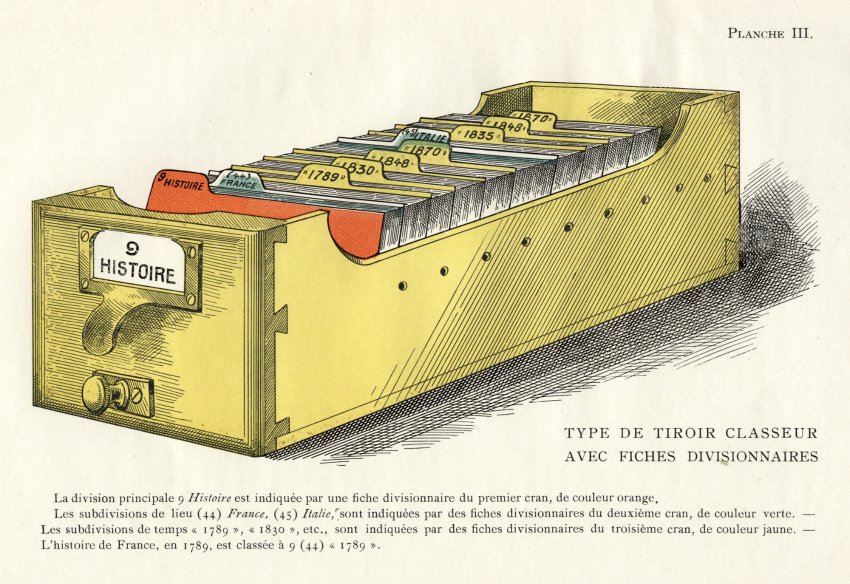
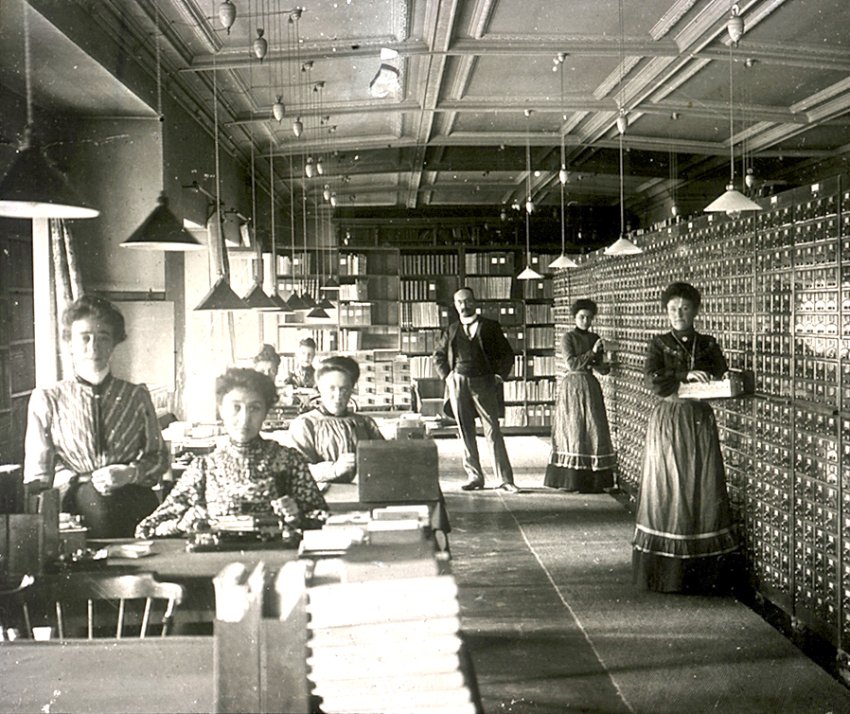

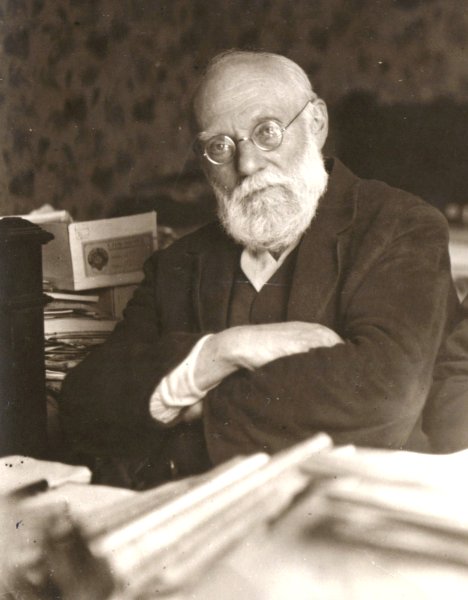
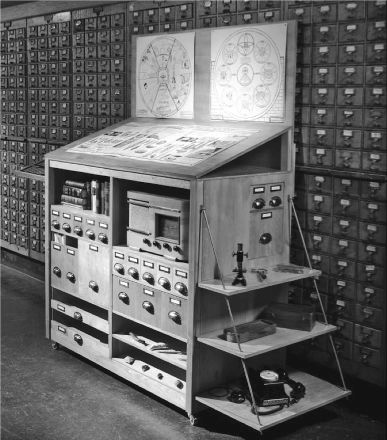




 Athos (Redwood City, CA), a company started by two students from the University of Waterloo, Canada, has developed workout attire with embedded sensors that track muscle function and activity. The Athos garment consists of a long sleeve shirt and stretchy pants embedded with EMG sensors that monitor muscle exertion, heart beat, and breath. The embedded sensors are capable of obtaining information from 22 muscle groups in the body and the information recorded is relayed to a wearable unit called the Core that processes muscle activity data along with heart rate data and sends it over to a smartphone app for final analysis.
Athos (Redwood City, CA), a company started by two students from the University of Waterloo, Canada, has developed workout attire with embedded sensors that track muscle function and activity. The Athos garment consists of a long sleeve shirt and stretchy pants embedded with EMG sensors that monitor muscle exertion, heart beat, and breath. The embedded sensors are capable of obtaining information from 22 muscle groups in the body and the information recorded is relayed to a wearable unit called the Core that processes muscle activity data along with heart rate data and sends it over to a smartphone app for final analysis. The app provides the user with valuable information such as the effectiveness of certain workouts, information about the user’s balance, and is able to also warn the user when he or she is in an improper workout or lifting posture. The Athos sensors are able to track the number of workout repetitions, so the user no longer has to carry around a pen and pad around the gym. Users can receive information regarding the amount of time spent resting or being active, and can see immediate results on how certain activities, such as stretching prior to a workout, can influence the end result. The app also provides users with continuous coaching, workout summaries, and allows sharing of results with friends and family. The Athos app is available for any Apple device running iOS 7 and it uses Bluetooth 4.0 to communicate with the Core.
The app provides the user with valuable information such as the effectiveness of certain workouts, information about the user’s balance, and is able to also warn the user when he or she is in an improper workout or lifting posture. The Athos sensors are able to track the number of workout repetitions, so the user no longer has to carry around a pen and pad around the gym. Users can receive information regarding the amount of time spent resting or being active, and can see immediate results on how certain activities, such as stretching prior to a workout, can influence the end result. The app also provides users with continuous coaching, workout summaries, and allows sharing of results with friends and family. The Athos app is available for any Apple device running iOS 7 and it uses Bluetooth 4.0 to communicate with the Core.
